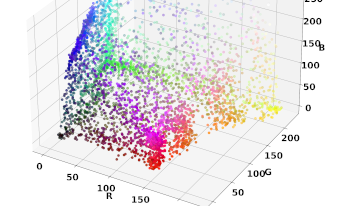
The focus of the work is to improve the reading performance of JAB Codes. JAB Code is a polychrome barcode that is ISO standardized. The weakness of the standardized decoding algorithm is the very low reading performance of under 10% for very large and rectangular codes. In many IT security applications, however, large and rectangular codes are required for the huge payload. In this paper, we present three different methods to improve the decoder. These methods aim at determining the version size of the JAB Code to be read. This is the step after the JAB Code has been located by the finder patterns and before the decoding can take place. The three methods have their advantages and disadvantages in their accuracy and performance. The evaluation compares detection rates and error performance for Baseline, Segmentation, Zero Crossing, and Local Sampling methods. The results show that Local Sampling achieves the highest detection rates, with 285 partial and 131 complete detections, while also maintaining the lowest error levels. The other methods perform significantly worse. The findings highlight that Local Sampling offers the best performance, effectively addressing the challenges of version size determination with improved accuracy and reliability.

The JAB Code, a 2D barcode standardized in ISO/IEC 23634:2022, offers improved reliability and data capacity over traditional barcodes, but its color recognition poses challenges. These issues stem from the suboptimal utilization of the RGB color space in printing and the non-bijective RGB-to-CMYK conversion, prompting the need to select colors that ensure distinct segregation in the transformed color space for enhanced detection robustness. We propose an approach for calibrating the colors of the JAB Code, involving the creation of a test pattern, quantization of the color space, and the calibration of colors using a calibration target. This method aims to ensure optimal color representation within the barcode and can be integrated into JAB Code generation tools or web apps, simplifying the process for users and ultimately improving color accuracy and fidelity within the barcode. We conduct an experiment with different printers, utilizing a smartphone for image capture. The evaluation includes printing JAB Code test patterns, creating and calibrating standard and calibrated JAB Codes, and capturing images under various lighting conditions. We use the JAB Code detection algorithm to analyze color distances in the RGB space, revealing improvements in color distribution and lower error rates with printer color calibration, which can lead to faster reading processes and smaller JAB Code sizes with reduced area requirements. This work offers important insights that should be considered during the next revision of the ISO standard.